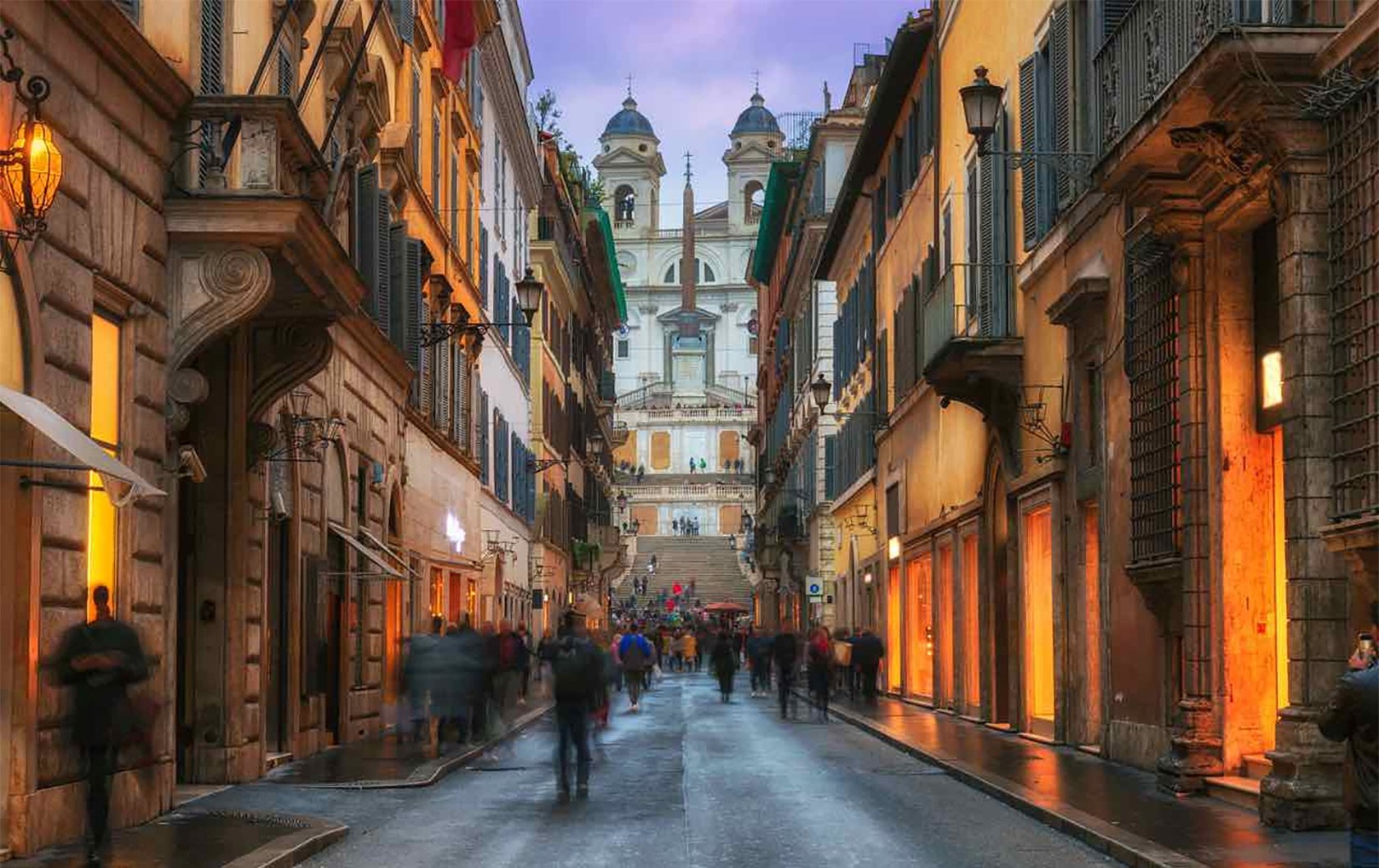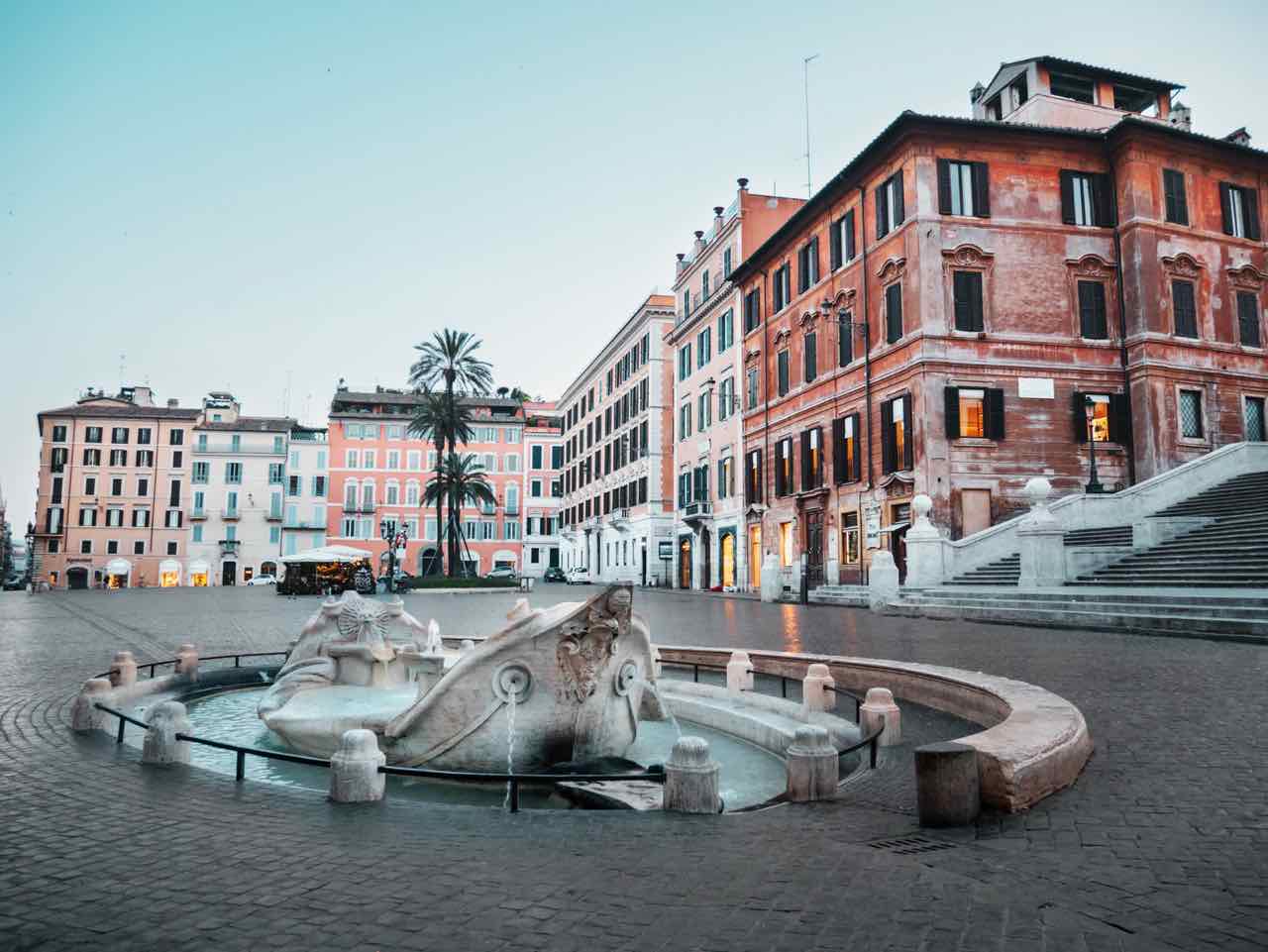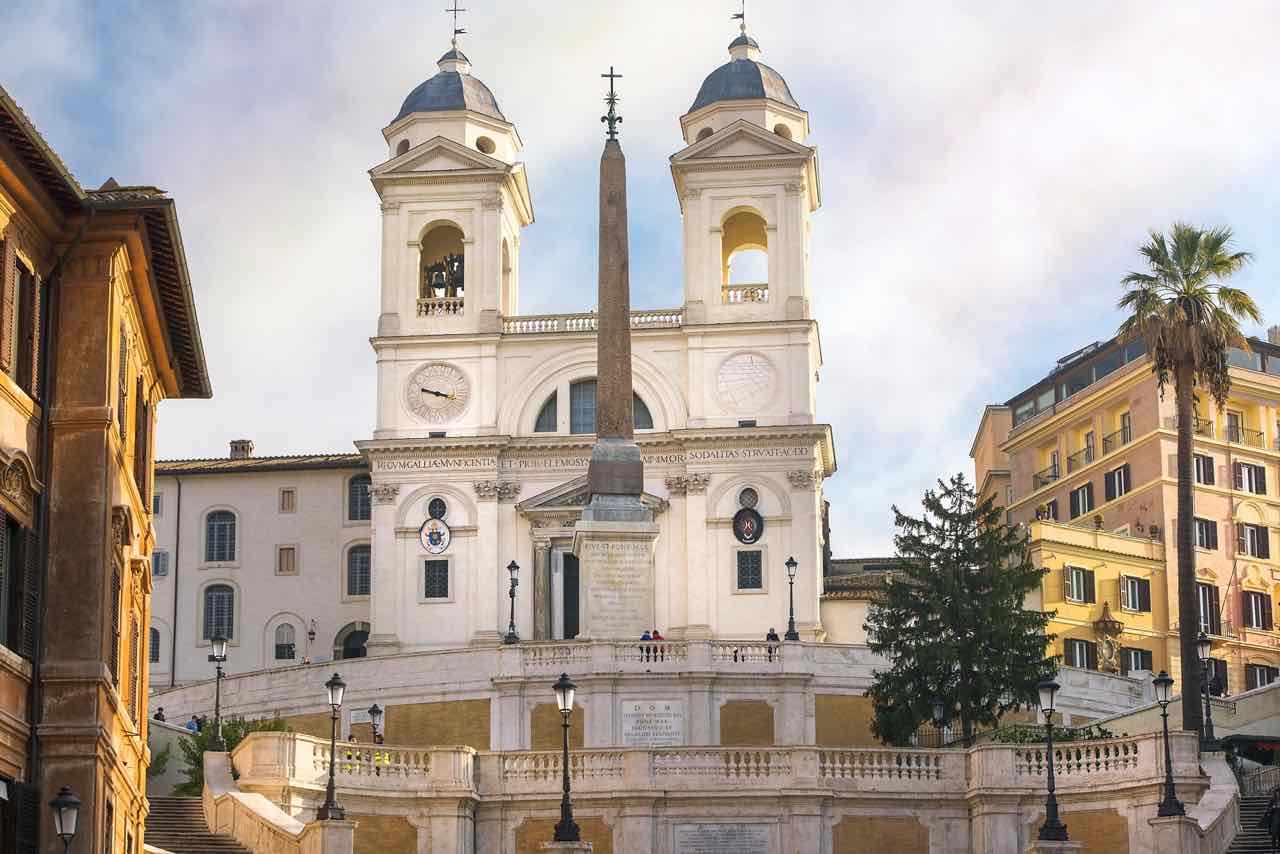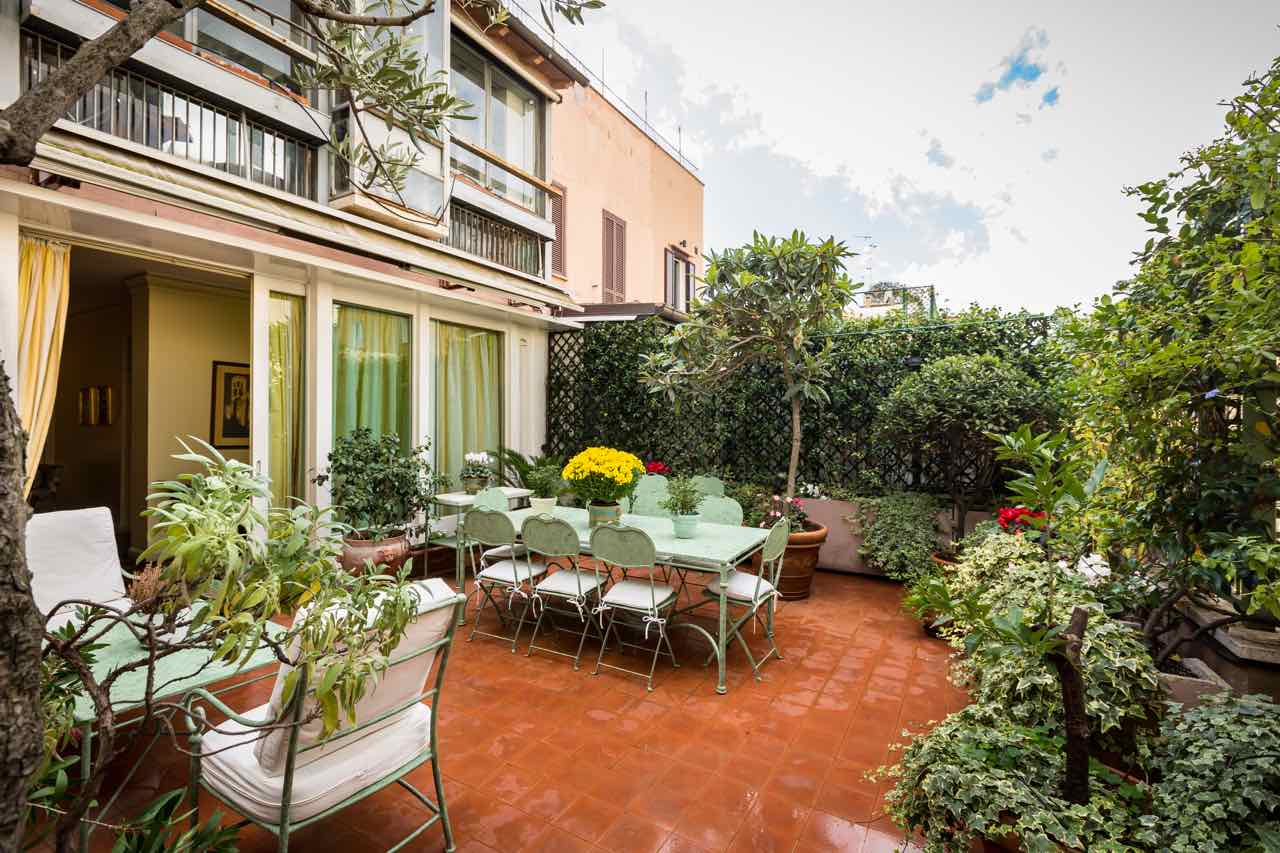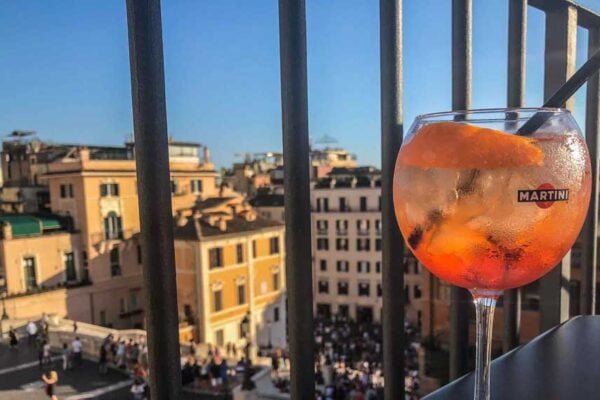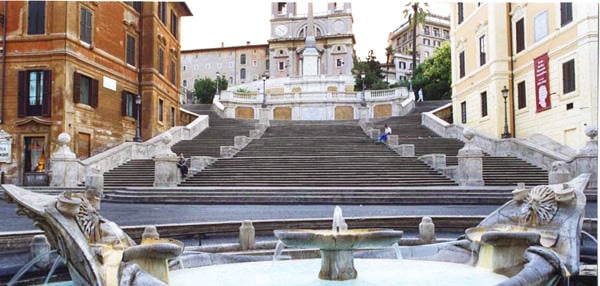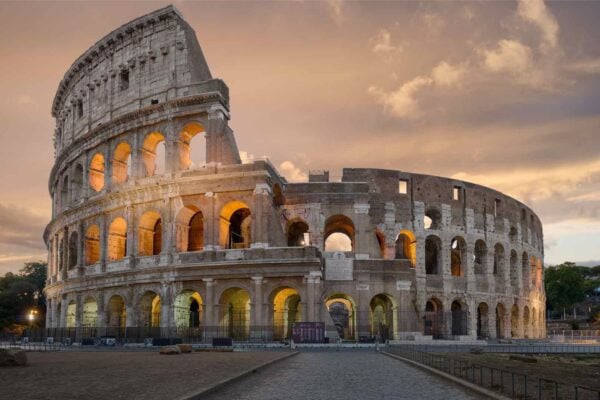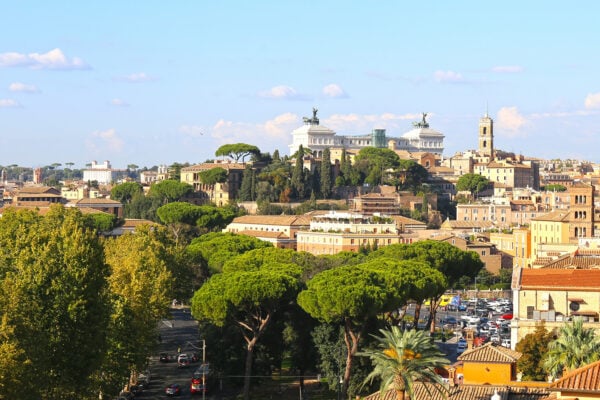If you’ve heard of the Spanish Steps in Rome, but haven’t seen them, you might be thinking: what’s so special about a staircase? The Spanish Steps have a special type of grandeur that one must appreciate in person, much like the steps leading up to the Sacre Coeur in Paris. The steps have been a gathering place for over two centuries, and they continue to be a meeting place and a melting pot for travelers from all over the world.
History of the Spanish Steps
The Spanish Steps were built in the early 1700s to connect the Trinita dei Monti church with the Spanish Square (Piazza di Spagna) below it. They take their name from the Spanish embassy to the Holy See, which was located in the square. The square surrounding the embassy was considered to be Spanish territory.
Though the steps were originally designed to connect the church to the square, they have since become famous for the way connect people of every kind by serving as a perfect meeting place for artists, writers, performers, couples, families, travelers, and Romans for more than two centuries.
The Spanish Steps Neighborhood
Although the Spanish Steps are the most famous attraction in this neighborhood, there are many other reasons to spend a day roaming this area.
At the foot of the Spanish Steps is the Keats-Shelley House. Many of the English Romantic poets were entranced by Italy, and particularly by Rome, and the poet Keats even lived in the Spanish Steps neighborhood, up until his death at the age of 25. The house now welcomes visitors as a museum and memorial to the English Romantic poets, with Keats’ bedroom preserved as when he lived there. It’s also home to one of the first libraries of Romantic Literature in the world with over 8,000 books in its collection!
Also at the foot of the steps: the Fontana della Barcaccia, or Fountain of the Boat. This is one of the many fountains that was designed in the early 1600s when Pope Urban VIII went about building a fountain in every major piazza in Rome. As you may have guessed from the name, the fountain takes the shape of a boat. According to local legend, the flood of 1598 caused a small boat to wash into the Spanish Square. When the flood receded, the boat remained, and this is where the fountain’s sculptor, Bernini, took his inspiration.
Our last stop at the foot of the steps: Babington’s Tea Room. That’s right: it’s an English tearoom in an Italian city in a Spanish square. The tearoom has been in operation since 1893. Ownership has stayed within families of the women who originally opened the shop: Isabel Cargill and Anna Maria Babington. They serve a great tea!
Wandering slightly away from the Spanish Square, stroll along Via Margutta. This charming little street was made famous in Roman Holiday and La Dolce Vita films, and now it’s home to small art galleries and shops. You’ll find a charming fountain – Fontana degli Artisiti – that is shaped like an easel and even equipped with brushes. Every year there is a painter’s festival held in this lane. Since the Middle Ages when the street was lined with blacksmiths and carpenters, it has inspired those with the creative spark.
The Spanish Steps neighborhood is not only historic, it is also home to some more modern attractions. Anyone interested in shopping absolutely cannot miss Via Condotti which is often compared to the Champs Elysees in Paris. This street is lined with designers including Gucci, Hermes, Bulgari, Prada, La Perla and more! This street also becomes particularly festive and decorated once the Christmas season starts. Nearby great shopping streets including Via Borgognona and Via delle Carrozze are home to many more wonderful designers. We love people watching “fashionistas” and, sometimes, fashion victims strolling in their fashionable outfits always carrying a designer labeled shopping bag.
Where to Stay in the Spanish Steps Neighborhood
Base yourself in this charming and well-located neighborhood by staying in one of our lovely apartments. With easy access to public transportation and a central location, it’s a perfect area for exploring all that Rome has to offer. The Donizetti Dream apartment has the stunning Italian terrace of everyone’s dreams and can sleep up to five guests. Facing Spagna is sunny Ginevra. The Zegno apartment is housed in a former palazzo that was built about 250 years ago, and is located right on the corner of the luxurious Via Condotti shopping street. Great family apartments are Elegante and Giada.
And a quick bit of advice before you venture out: a new law was recently passed that bans anyone from sitting down on the Steps, but everyone is still welcome to visit and traverse the Steps and enjoy the views from the top. It’s not a trip to Rome without seeing these famous Steps!
